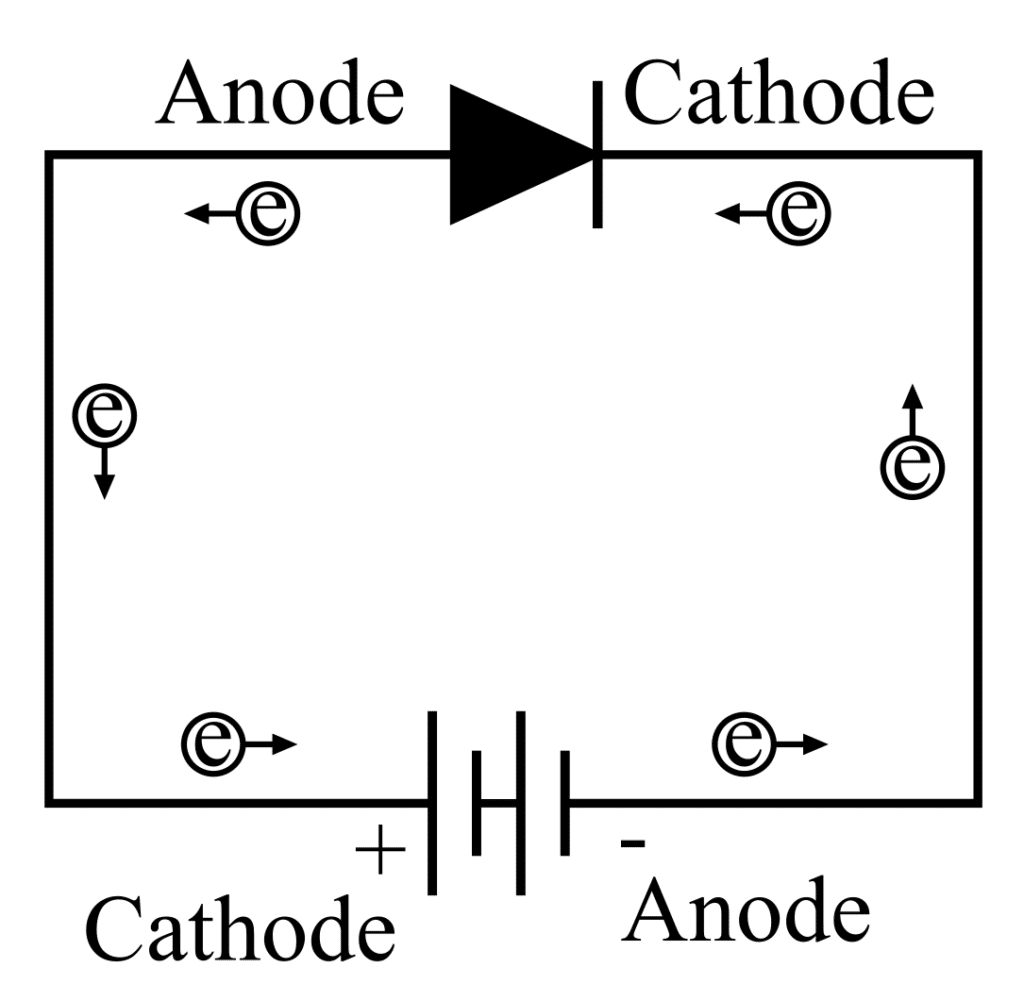In this article, we will discuss the important differences between anode and cathode. But before that let us know a bit about the anode and cathode individually.
When we talk about electronic devices such as batteries, cells, diodes, etc. we come across the terms anode and cathode. These two terms are basically used to represent the electrodes of the devices. The electrode is part of an electrical or electronic device that is employed for making connections between devices in the circuit. Based on the polarity and property, electrodes are classified into two types namely anode and cathode. The fundamental difference between an anode and a cathode is that the anode is the electrode of a device where the loss of electrons happens, whereas the cathode is the electrode of a device where the gain of electrons takes place.
Now, let us discuss the anode and cathode in more detail.
What is Anode?
Anode is a terminal/electrode of an electronic device like a cell or diode, at which oxidation takes place. Hence, the anode is the terminal where the loss of electrons takes place. In simple words, the anode is the electrode of the device where electrons leave the device.

However, the polarity of anode could be positive or negative depending upon the nature of device. For example, consider the electric circuit shown in the figure. Here, for the diode, an anode is a positive electrode, whereas, for the battery, the anode is negative. This is because, in the case of a diode, electrons leave the diode at the positive terminal, while in the case of the battery, electrons leave the battery at the negative electrode.
What is Cathode?
Cathode is another terminal or electrode of an electronic device. Cathode is the electrode where reduction takes place. Hence, at the cathode, there is a gain of electrons. In other words, the cathode is the electrode of the device where electrons enter the device.
Similar to the anode, the cathode can be of different polarity depending upon the nature of the device. Again refer to the circuit shown in figure above. For the diode, the cathode is a negative terminal/electrode, because it is the point at which electrons enter to the diode. Whereas, in the case of battery, the cathode is positive as electrons entering into the battery through this terminal.
After getting the insights about anode and cathode, let us now discuss the key differences between anode and cathode.
Differences between Anode and Cathode
The significant differences between anode and cathode are listed in the table given below:
| Key | Anode | Cathode |
| Definition | Anode is an electrode of an electronic device where electrons leave the device. Alternatively, the electrode at which current moves into the device is called the anode. | Cathode is another terminal of an electronic device where electrons move into the device. In other words, the electrode through which current moves out of the device is called the cathode. |
| Positive Polarity | Anode is positive (+) in devices that act as load, i.e. those device that consumes electricity such as diode, resistor, etc. | The cathode is positive (+) in those devices that act as a source, i.e. supplies power. For example, battery, cell, etc. |
| Negative Polarity | Anode is negative (-) in devices that act as the source of power like batteries. | Cathode is negative (-) in devices that act as load-like diodes. |
| Reaction | At the anode, an oxidation reaction takes place. | At the cathode, a reduction reaction takes place |
| Loss/Gain of Electrons | At the anode, loss of electrons takes place. | At the cathode, the gain of electrons takes place. |
| Polarity in Galvanic Cell | In a galvanic cell, anode is a negative terminal. | The cathode is positive in the galvanic cells. |
| Polarity in Electrolytic Cell | The anode of electrolytic cell is positive. | The cathode of electrolytic cell is negative. |
| Behavior | Anode acts like an electron donor. | The cathode acts like an electron acceptor. |
Conclusion
Hence, this is all about the important differences between anode and cathode. In conclusion, the anode and cathode both are the two electrodes of an electronic device that help in connecting the device in a circuit properly. The most significant difference that we can state from the above comparison is that the anode is the electrode where electrons leave the device, while the cathode is the electrode where electrons move into the device.